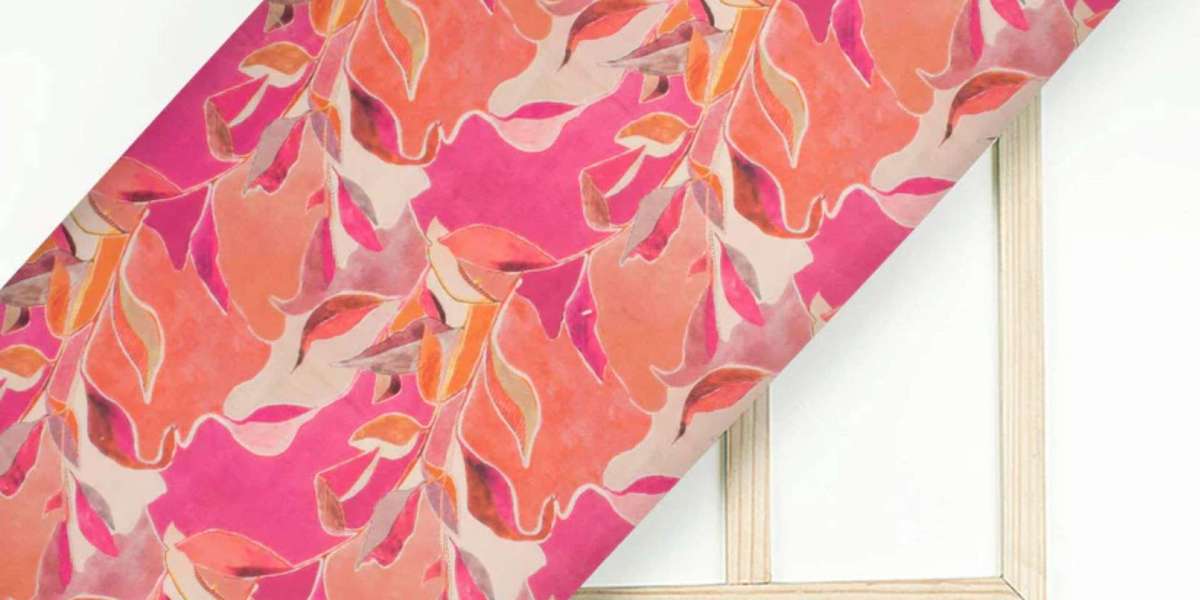Online shopping for fabrics has become incredibly popular, thanks to the ease of access and wide variety of options at our fingertips. However, when it comes to delicate materials like chiffon fabric, net fabric, and silk fabric, it's important to know what you're buying. Without the ability to touch or feel the fabric, how can you tell if it's high quality?
In this guide, we’ll walk you through easy and effective ways to identify top-grade chiffon, net, and silk fabrics online — and help you make smarter, more confident purchases for your next outfit or creative project.
1. Understand Fabric Composition and Descriptions
The first step to spotting quality fabric online is reading the product description carefully. Most genuine sellers provide details on the material blend, thread count, GSM (grams per square meter), and weave.
Chiffon fabric is traditionally made from silk, but nowadays, you’ll find polyester and nylon blends too. High-quality chiffon feels soft, slightly rough (like fine sand), and has a flowing drape.
Net fabric varies widely in quality. Look for a net with even mesh spacing, soft texture, and a bit of stretch or give. Stiff or scratchy net can be a sign of poor material.
Silk fabric should always be described as 100% silk or mulberry silk. If it's labeled as “art silk” or “silk blend,” it’s not pure.
Always check whether the seller specifies if the fabric is natural, synthetic, or a mix. This helps gauge both price and quality expectations.
2. Zoom In On Product Images
High-resolution images are a goldmine of information. Use the zoom feature and examine:
Weave Pattern: Authentic silk fabric often has a subtle sheen and smooth weave with minor imperfections, which indicate it’s handmade or naturally woven.
Texture & Transparency: Chiffon fabric should look semi-sheer, light, and slightly grainy, whereas net fabric should show uniform holes or mesh.
Embroidery Work: If you’re eyeing organza embroidery fabric, look at the finishing of the threadwork. Frayed or uneven threads may indicate machine-made or low-quality embroidery.
Lighting in the images also matters — natural light gives a better sense of true color and texture than overly edited photos.
3. Compare Prices Intelligently
While deals are tempting, extremely low prices for silk fabric or chiffon fabric can be a red flag. Pure silk is naturally expensive due to the labor-intensive production process. Similarly, genuine chiffon, especially the kind used in designer outfits, will not come dirt cheap.
White cotton fabric, often used as a lining or base material, can help you compare the prices of more premium fabrics. For example, if a seller prices cotton and chiffon similarly, be cautious.
A tip: If a site offers organza embroidery fabric with heavy work at an unusually low price, it might be synthetic or machine-stitched with lower quality threads.
4. Check Customer Reviews and Buyer Photos
Nothing speaks louder than the experience of other customers. Look for:
Feedback on fabric texture and weight
Comments on whether the fabric matched the photo and description
Uploads of buyer images for real-life representation
This is especially helpful when purchasing net fabric for dupattas, gowns, or sarees — since the way it falls and photographs often affects styling decisions.
5. Understand GSM and Fabric Weight
GSM (grams per square meter) determines how heavy or light the fabric is. Higher GSM usually means a thicker and more durable material.
Chiffon fabric should be between 30–50 GSM — higher GSM indicates more flow and opacity.
Net fabric is generally lightweight, around 20–40 GSM. Bridal or formal wear net might be heavier due to attached sequins or embroidery.
Silk fabric ranges from 60–100 GSM depending on the type (Chanderi silk is lighter, while Tussar is heavier).
Cross-reference the GSM with your project needs. If you're planning a summer kurta using white cotton fabric, for instance, you’d want a GSM around 80 for breathability.
6. Ask for a Fabric Swatch (If Possible)
Some online stores offer swatches or small samples for a nominal price. If you're unsure about the feel or finish of a fabric — especially chiffon fabric or silk fabric — ordering a swatch first is a smart move.
This is particularly useful for custom tailoring or bulk purchasing, where quality truly matters.
7. Understand Use Cases and Layering Options
Sometimes, layering the right base can make a difference in how premium the top fabric appears. For example:
Pairing chiffon fabric with white cotton fabric as a lining gives better structure for ethnic dresses.
Using net fabric as a top layer over organza embroidery fabric creates a luxurious, designer look.
The way you layer and combine fabrics affects both the aesthetics and wearability of the final piece.
Final Thoughts
Online fabric shopping doesn’t have to be guesswork. By paying close attention to descriptions, prices, customer feedback, and fabric characteristics, you can confidently identify high-quality chiffon fabric, net fabric, and silk fabric without stepping into a store. And while you're at it, don't forget the value of classics like white cotton fabric and the beauty of detailed organza embroidery fabric — both of which add versatility and charm to any fashion project.
So the next time you browse for fabrics online, you’ll not only shop smarter but also craft creations that truly stand out.






